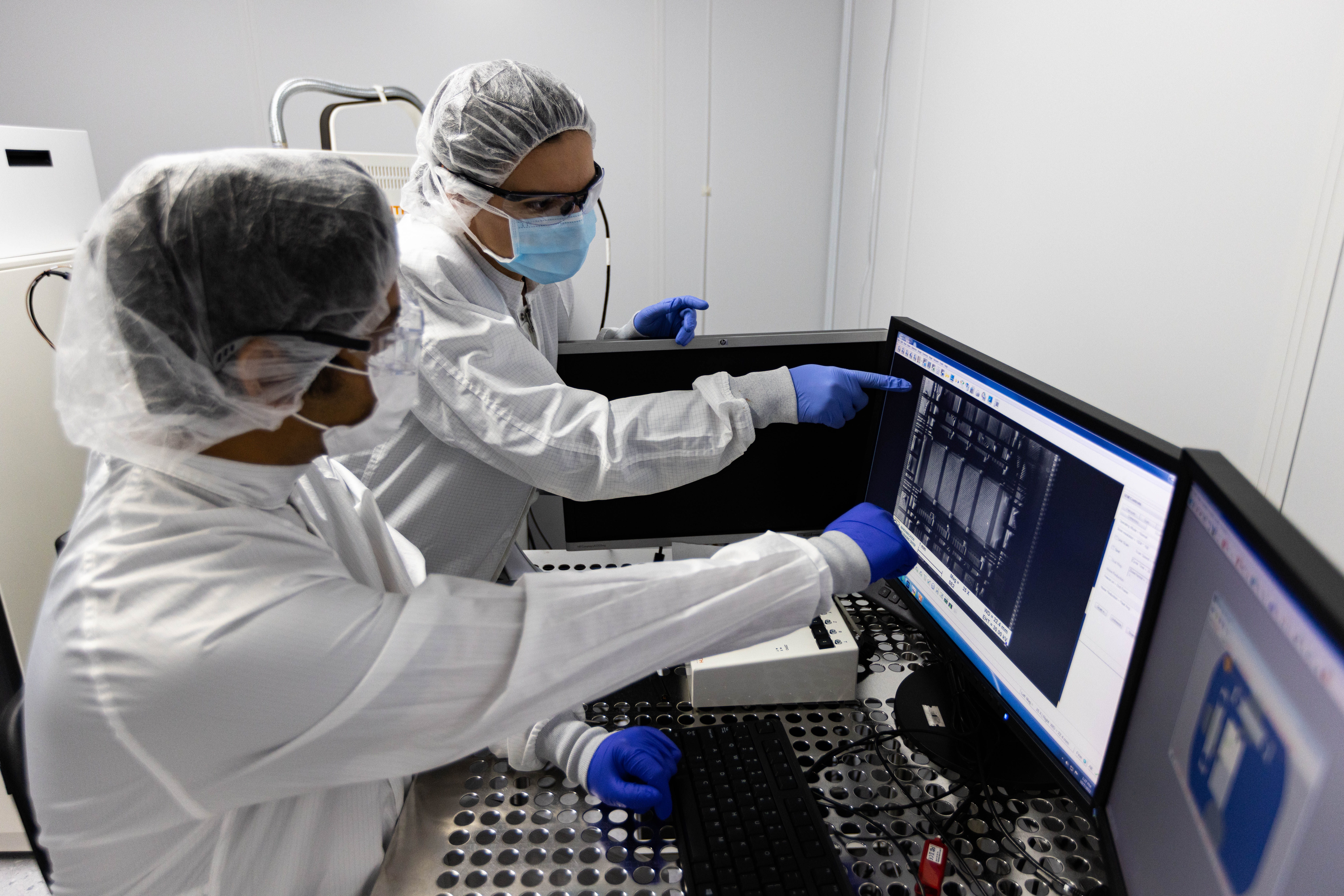The U.S. Department of Commerce’s National Institute of Standards and Technology (NIST) has signed a cooperative research and development agreement with Google to develop and produce chips that researchers can use to develop new nanotechnology and semiconductor devices.
Dr. Gina Adam, Assistant Professor of Electrical and Computer Engineering at GWU, is contributing as a research partner to develop a nanotechnology accelerator platform. She has been contributing to the new research agreement by prototyping new chip designs that, if successful, can be moved quickly into the production stage. Her group is already using the GW's nanofabrication facility as well as NIST's Center for Nanoscale Science and Technology to develop and test new chips that heterogeneously integrate existing transistor technology with new emerging memristor devices for neuromorphic applications. Professor Adam's group has been contributing designs for the past year, together with groups at Univ of Michigan, Univ of Maryland, Brown University and Carnegie Mellon Univ.
The chips will be manufactured at the SkyWater Technology Foundry for semiconductors in Bloomington, Minnesota. Google will pay the initial cost of setting up production and will subsidize the first production run. NIST and university research partners will design circuitry for the chips.
Professor Adam had this to say: “This is an amazing opportunity for university researchers working on novel device technologies and their heterogeneous integration for metrology and prototyping. It is fantastic to have NIST, Google and Skywater support this open-source initiative and it will be interesting to see continued benchmarking and workforce development efforts in these key areas.”
The announcement of the collaboration comes just months after the U.S. Government signed the bipartisan CHIPS Act into law, which seeks to spur and strengthen domestic manufacturing, research, design, and supply of microelectronics to ensure American competitiveness and security.
To learn more about this research, visit the NIST website.
Find Professor Adam on LinkedIn.


